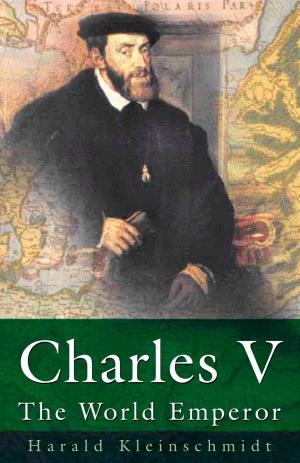| Author: | John Oakes | ISBN: | 9780752471082 |
| Publisher: | The History Press | Publication: | September 16, 2011 |
| Imprint: | The History Press | Language: | English |
| Author: | John Oakes |
| ISBN: | 9780752471082 |
| Publisher: | The History Press |
| Publication: | September 16, 2011 |
| Imprint: | The History Press |
| Language: | English |
How Libya evolved from Ottoman province to international pariah to seething cauldron of rebellion under Gaddafi, up to date with information on Gaddafi's death Tracing Libya's colorful history, this book details the events which shaped Gaddafi's personality, the influences which molded his career, the security apparatus which kept him in power, and the human rights violations he committed. When the oil-rich Kingdom of Libya descended into corruption and irresolution, a young Libyan army officer named Muammar Gaddafi seized power in a coup on September 1, 1969. Under his rule Libya became a pariah state, harboring terrorists from nearly every dissident group in the world and accumulating an enormous arsenal of lethal weaponry. The late Gaddafi was autocratic and cruel, and his people finally rose up against him in February 2011—but how did he survive for so long? This history is a story of Roman legions, Barbary pirates, slave traders, camel caravans, and Ottoman Beys; of Italian colonists, Bedouin tribes, Texan oil barons, the Lockerbie disaster, and mass murder in the Abu Salim jail. Most poignantly, it is the story of the human cost of freeing Libya from Gaddafi.
How Libya evolved from Ottoman province to international pariah to seething cauldron of rebellion under Gaddafi, up to date with information on Gaddafi's death Tracing Libya's colorful history, this book details the events which shaped Gaddafi's personality, the influences which molded his career, the security apparatus which kept him in power, and the human rights violations he committed. When the oil-rich Kingdom of Libya descended into corruption and irresolution, a young Libyan army officer named Muammar Gaddafi seized power in a coup on September 1, 1969. Under his rule Libya became a pariah state, harboring terrorists from nearly every dissident group in the world and accumulating an enormous arsenal of lethal weaponry. The late Gaddafi was autocratic and cruel, and his people finally rose up against him in February 2011—but how did he survive for so long? This history is a story of Roman legions, Barbary pirates, slave traders, camel caravans, and Ottoman Beys; of Italian colonists, Bedouin tribes, Texan oil barons, the Lockerbie disaster, and mass murder in the Abu Salim jail. Most poignantly, it is the story of the human cost of freeing Libya from Gaddafi.















